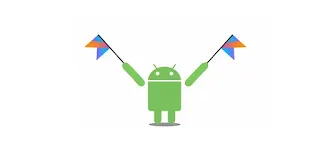77. Channel in Kotlin: Communication between coroutines
🌊 Channels in Kotlin: Powerful Coroutine Communication
Dear Kotlin developers! Today we'll dive deep into one of the most powerful concurrency mechanisms in Kotlin - Channels. They provide an elegant way for coroutines to communicate and exchange data safely and efficiently.
🔍 What Are Channels?
Channels in Kotlin are special constructs that allow sending and receiving values between different coroutines. They act like a pipeline or a thread-safe queue, enabling seamless communication without complex synchronization mechanisms.
🧰 Basic Channel Types
- Unlimited Channel: No capacity restrictions
- Buffered Channel: Fixed buffer size
- Rendezvous Channel: Synchronous communication
- Conflated Channel: Always keeps the latest value
📡 Creating Channels
import kotlinx.coroutines.channels.* // Unlimited channel val unlimitedChannel = Channel() // Buffered channel with capacity val bufferedChannel = Channel (capacity = 10) // Conflated channel val conflatedChannel = Channel (Channel.CONFLATED)
🚀 Sending and Receiving Data
runBlocking {
val channel = Channel()
launch {
// Sending data
for (x in 1..5) {
channel.send(x)
}
channel.close()
}
launch {
// Receiving data
for (y in channel) {
println(y)
}
}
}
🔄 Channel Iteration Patterns
// Using consumeAsFlow
channel
.consumeAsFlow()
.collect { value ->
println(value)
}
// Using produce builder
val channel = produce {
for (x in 1..10) {
send(x)
}
}
💪 Practical Exercises
⚠️ Common Pitfalls
- Forgetting to close channels
- Not handling channel capacity correctly
- Blocking receiver coroutines
🎯 Performance Considerations
Channels have minimal overhead but choose the right channel type for your use case. Buffered channels can improve performance in producer-heavy scenarios.
📱 Stay Updated with Android Tips!
Join our Telegram channel for exclusive content, useful tips, and the latest Android updates!
👉 Join Our Telegram ChannelGet daily updates and be part of our growing Android community!


Comments
Post a Comment